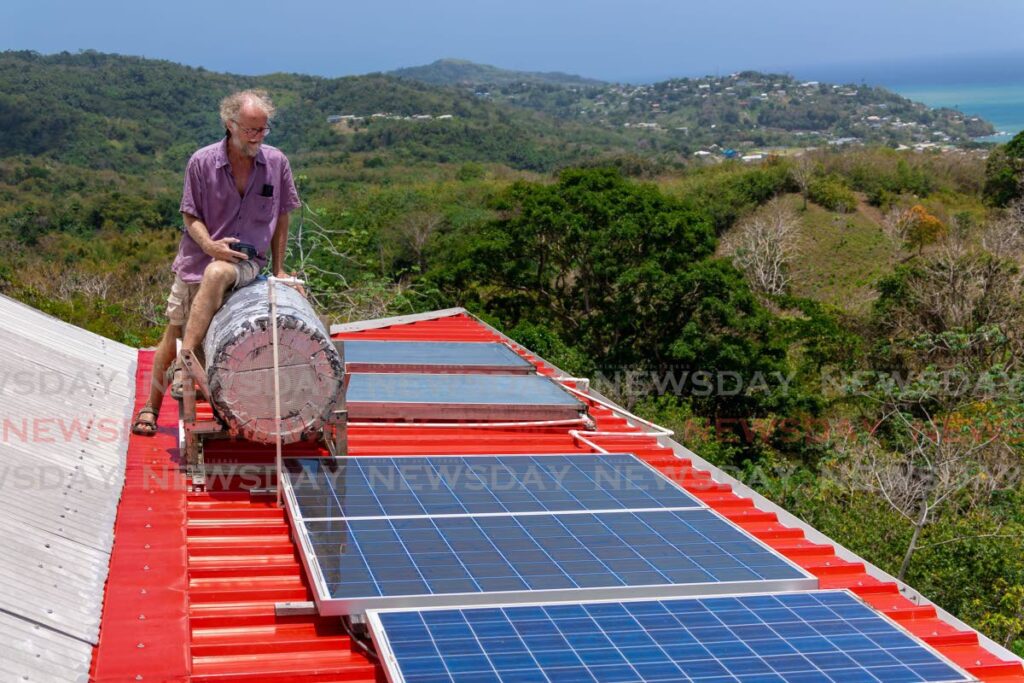How to go green at home, work

In last week’s column – Green buildings and energy efficiency – we introduced readers to the concept of green buildings.
A green building is one that has been constructed or outfitted to minimise its impact on the environment. The objectives are usually to ensure efficient energy and water use, sustainability in the construction value chain (for new builds), and a low footprint in terms of its impact on the surrounding environment.
These structures are becoming increasingly important in the Caribbean context, as building construction and operation contribute significantly to regional carbon emissions.
While integration of green design principles may be easiest for new builds, while targeting greater energy efficiency is perhaps the easiest approach for older structures.
Below are some simple ways to reduce the environmental footprint of your home or office buildings.
Reduce energy usage
The model and date of manufacture on some machines (eg appliances) can have bearing on the amount of energy they consume, as older technology is generally less efficient. Newer models are usually manufactured to conform to stricter environmental standards.
Switching out old appliances for energy efficient models, replacing incandescent bulbs with LED bulbs and installing dimmer switches are therefore simple but effective ways to reduce power consumption.
Where machines are operated using automated controls (eg fans or air-conditioners regulated by thermostats), it is also important to routinely assess these controls to ensure they are in working order, as malfunctions can impact energy use.
Another easy way is to adjust personal behaviours and practices. Using fans and natural ventilation instead of air conditioning and quite simply turning off lights and appliances when not in use are all effective ways to reduce energy usage. Office building managers can also seek to better match internal temperatures with user needs.
Building design
The installation of awnings or planting of shade trees around homes and buildings can help regulate internal temperatures and reduce reliance on air conditioning.

Where possible, homeowners or building developers can seek to integrate outdoor spaces such as covered balconies or terraces for occupants to capitalise on natural light and fresh air to work or rest instead of being confined to regulated internal environments.
Rooftop terraces would also allow for integration of sustainable gardening and rainwater harvesting.
Routine maintenance of the building "envelope" – the physical barrier between the conditioned and non-conditioned environment of a building – can help reduce energy demand.
Ill-fitting doors or damaged windows, for example, can affect a structure’s insulation and impact internal temperature regulation, so repairs and updates should be made where necessary. Radiant barriers can be installed under roofing to reflect heat and reduce demand for internal cooling.
Sustainable consumption
As the world embraces alternative energy sources, renewable energy technologies are becoming cheaper and more accessible.
Installation of solar panels is one way to reduce demand for grid electricity and make power consumption more sustainable. Solar-powered devices can also help – consider, for instance, how switching parking lot lights or fence lamps to solar fixtures can cut power consumption at night.
Minimising waste generation on single-use materials and encouraging recycling are other approaches to making buildings greener in the long run.
Win-win
Collectively, these simple changes can simultaneously reduce the footprint of the built environment and lower operational costs for homeowners and businesses alike. This makes green buildings a worthwhile investment from both financial and environmental standpoints.
Given the urgency of climate action, green buildings will undoubtedly play an important role as we look to build a more sustainable future for our planet.
This article was contributed to by the National Gas Company. To learn more about ways to reduce energy consumption, download NGC’s EnergySmarTT app from the Google Play or App Store. For more information about the clean energy transition, visit the website www.carigreen.ngc.co.tt


Comments
"How to go green at home, work"